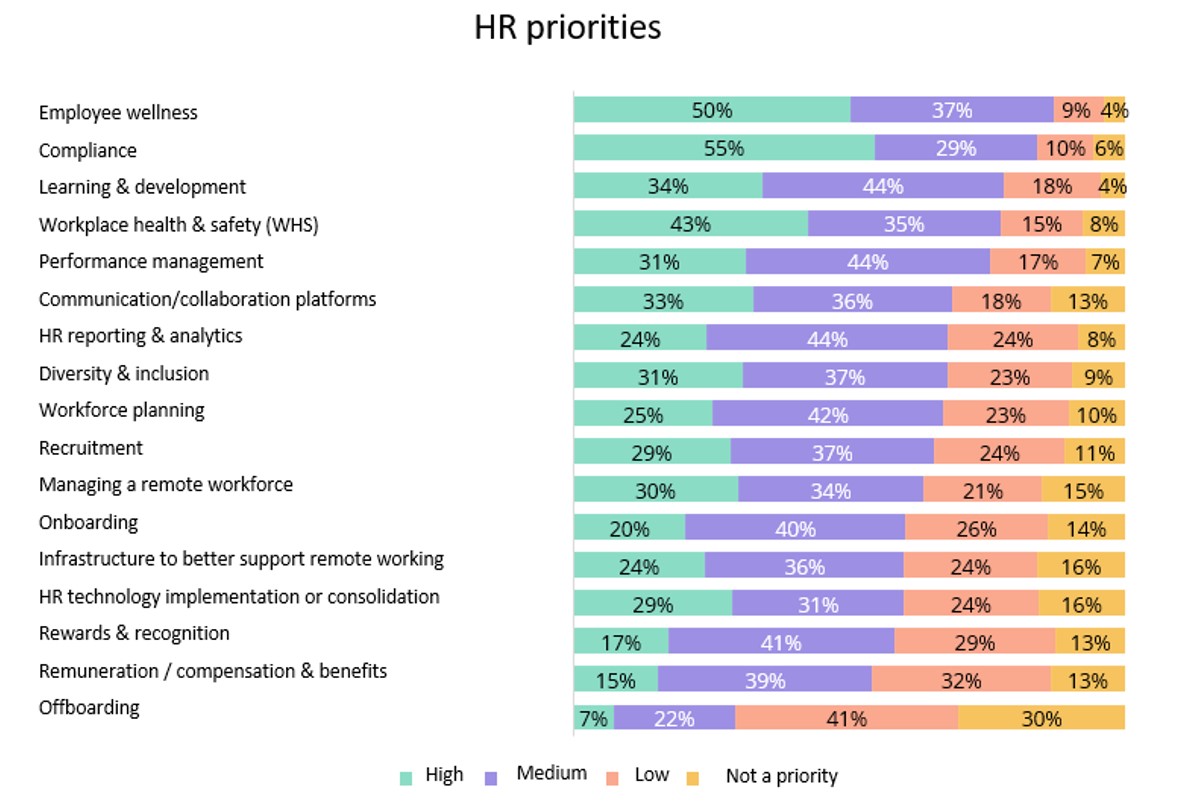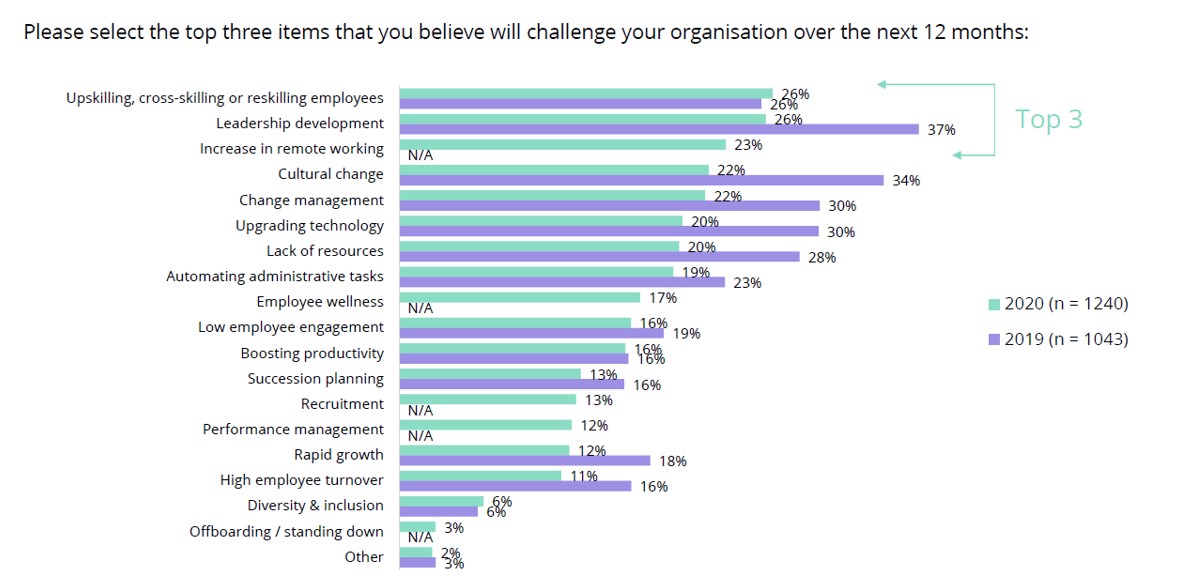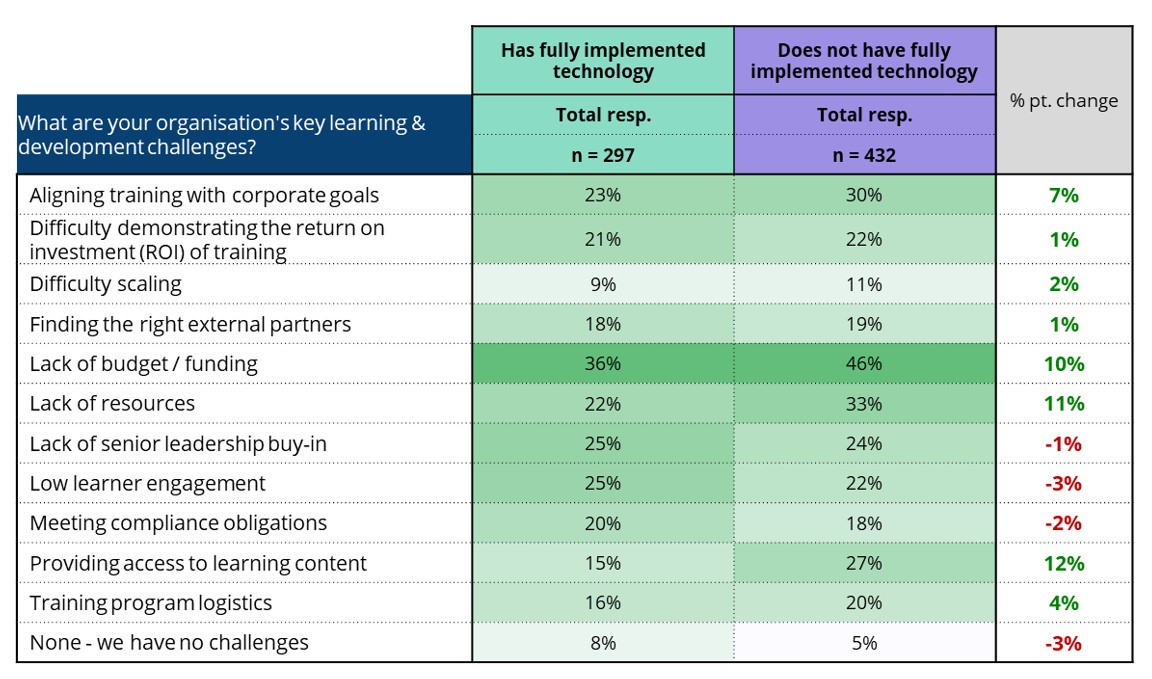Learning & Development: HR Industry Report
Learning & development is undoubtedly a critical business priority. It aligns employee goals and performance with that of the organisation, while helping to develop future leaders. Research highlights that companies ...

Learning & development is undoubtedly a critical business priority. It aligns employee goals and performance with that of the organisation, while helping to develop future leaders. Research highlights that companies that invest in employee training enjoy 24% higher profit margins than those who don’t[1], while those that invest in developing leaders during significant transformations are 2.4 times more likely to hit their performance targets.[2]
Learning & development is not only critical to the business’s bottom line; it’s also a key component of employee engagement. Robust learning & development programs mean higher job satisfaction, higher levels of employee commitment and advocacy, and improved retention.
To find out more about the challenges and opportunities facing employers in Australia and New Zealand, ELMO partnered with the Australian HR Institute (AHRI) to survey over 1800 HR professionals. The results have been published in the 2020 HR Industry Benchmark Report, which is available for download now. In this blog, we delve into the key findings of the learning & development component of the report.
Learning & development as a HR priority
When asked to rank a series of priorities for FY20/21, survey respondents placed learning & development as the third most important HR priority, following compliance and employee wellness – the latter being the top priority (see graph below).
This contrasts somewhat with the 2019 results, in which learning & development ranked as the number one priority. This focus shift from learning & development to employee wellness is not surprising and can be explained by employers having to reprioritise efforts to cover the basic need of keeping employees safe – both physically and psychologically – during COVID-19. This meant that learning & development initiatives have taken more of a backseat. Nonetheless, ranking in position three, learning & development remains a critical HR priority and will be essential as organisations recover from the turmoil of the past year.
HR challenges in FY20/21
When asked about HR challenges over the next 12 months, it’s significant that two learning & development-related areas rated highly. The top challenge, cited by 26% of respondents, was ‘upskilling, cross-skilling or reskilling employees’.
Leadership development ranked just as highly, with 26% indicating it would be a challenge over the next 12 months, down from 37% in 2019.
This renewed focus on skills challenges makes sense given the current context. With the report highlighting that recruitment has moved down the list of priorities for FY20/21, with only two-thirds (66%) of respondents saying it was a high or medium priority for their organisation, compared with three-quarters (75%) in 2019, it’s not surprising that upskilling, reskilling, and cross-skilling employees ranked first as an organisational challenge over the next 12 months. This supports the observation that while many organisations are in a fortunate position to resume recruitment efforts, many are looking at alternative ways to fill resource gaps, through re-skilling, upskilling or cross-skilling initiatives.
The focus on leadership development as an ongoing challenge is also not surprising. As organisations continue to deal with the aftermath of the pandemic, as well as fundamental changes to business operations, it will fall on existing and future leaders to navigate through this uncertain future.
How technology can help
The survey revealed that technology reduced challenges in certain areas relating to learning & development, among them: a lack of resources, providing access to learning content, aligning training with corporate goals, and training program logistics.
The report found technology can also help with leadership development. When responses were broken down by those who did and did not use a form of succession management technology, the results showed that technology does a lot to support HR teams with their succession management strategy. For example, it helps to clarify the professional development opportunities available and identify new / emerging roles for potential successors. It also makes the record keeping of skills, experience, and qualifications much easier, which may also be why respondents who use technology are less challenged by a lack of time or resources.
However, technology will not resolve all learning & development challenges. Indeed, certain challenges remained in place regardless of whether or not technology was utilised. For example, ‘lack of budget / funding’ was cited by 36% of those with technology and 46% of those without technology, so it remains a significant challenge for all. ‘Low learner engagement’ was also selected as a key challenge by those with technology and by those without technology, indicating that effective instructional design and course content are critically important regardless of the delivery method.
Looking ahead
While this temporary shift in focus away from learning & development was understandable given the disruptive events of COVID-19, HR should aim to re-prioritise this in 2021. With employment markets looking stronger in 2021, organisations should be aiming to retain their star performers – and one way to do that is by investing in learning & development and providing clear career paths.
This blog only presents top-level results from one section of the ELMO 2020 HR Industry Benchmark Report. If you’d like a comprehensive overview of HR and payroll trends, challenges, use of metrics and technology, download your report today. The HR Industry Benchmark Report provides in-depth insights into the current state of end-to-end HR processes, including recruitment and onboarding, learning & development, performance management, and more. Data in our report is split by company size, geography (Australia / New Zealand), role seniority, and industry^ – enabling you to benchmark your current HR practices against your peers.
ELMO Software offers end-to-end solutions for the entire employee lifecycle, from ‘hire to retire’. This includes recruitment, learning, performance management, payroll, rostering / time & attendance, and more. For further information, contact us.
^Report+ only.
[1] HuffPost, 2014
[2] McKinsey & Company, The essential components of a successful L&D strategy, February 2019
 HR Core
HR Core 












